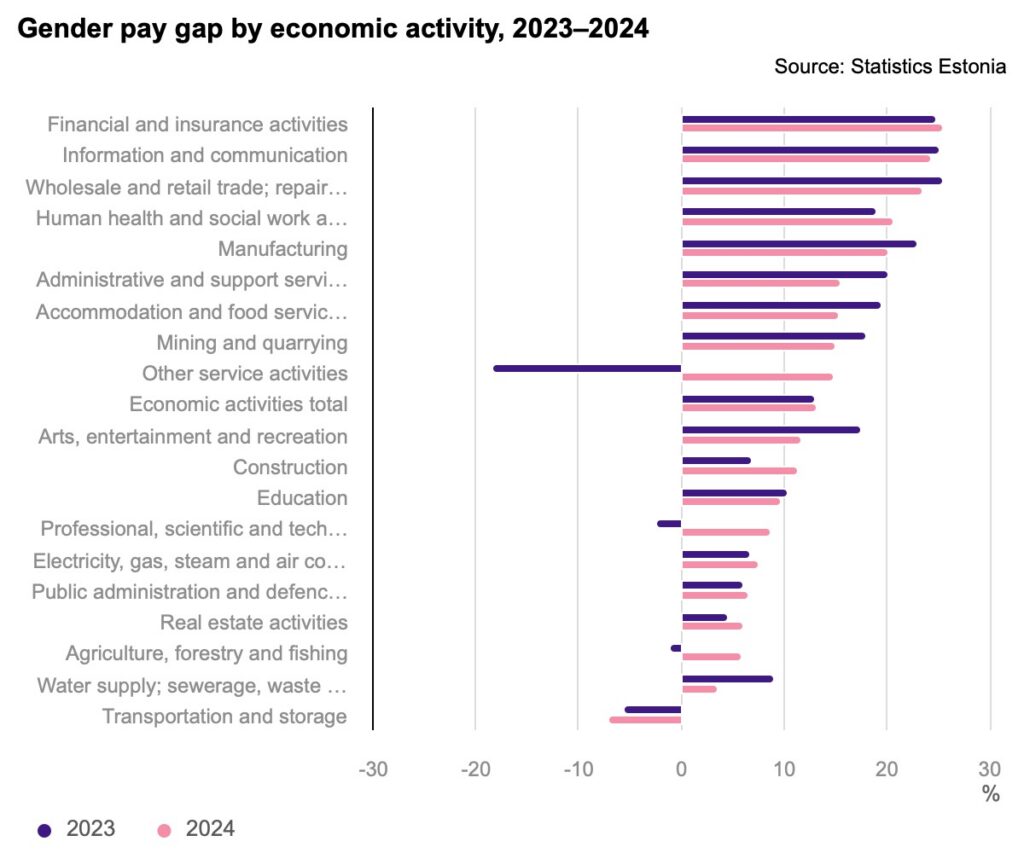Women in Estonia earned 13.2 per cent less per hour than men in 2024, according to the latest figures from Statistics Estonia – a slight increase in the gender pay gap compared with the previous year.
The pay disparity grew by 0.1 percentage points over the year, with the widest gap recorded in the financial and insurance sector, where women earned, on average, a quarter less than their male counterparts.
Sigrid Saagpakk, an analyst at Statistics Estonia, said the gap exceeded 20 per cent in five sectors: financial and insurance activities (25.5%), information and communication (24.4%), wholesale and retail trade, including vehicle repairs (23.5%), human health and social work (20.7%), and manufacturing (20.2%).
One of the most striking changes was in “other service activities”, where the gender pay gap swung dramatically from a reverse gap of –18.4 per cent in 2023 – meaning women earned more than men – to a 14.8 per cent gap in favour of men this year.
Transportation and storage remained the only sector where women out-earned men.
Other sectors with a relatively small gender pay gap included water supply and waste management (3.6%), agriculture and fishing (5.9%), real estate activities (6%), and public administration and defence (6.5%).
The highest wages overall were recorded in the information and communication sector.

“Average gross hourly wages were the highest in information and communication: €21.6 for male and €16.3 for female employees. In financial and insurance activities, men earned €20.7 and women €15.4 per hour on average,” Saagpakk noted.
Gross hourly wages were the lowest in accommodation and food service activities for both male and female employees – €8.4 and €7.1, respectively.
Saagpakk noted that the gender pay gap in Estonia has decreased by 9.7 percentage points since 2011.

Negative consequences, also in the future
“The gender pay gap is an indicator of overall gender equality in society,” said Eva Liina Kliiman, an adviser at the Estonian economic affairs ministry. “The difference in women’s and men’s average wages has very real negative consequences, as wages determine our wellbeing not just in the present but also in the future. The inequality that exists today has a direct impact on various benefits and on pensions, for example.”
“To reduce the gender pay gap, we need to diminish the impact of gender stereotypes on the choices and opportunities available to women and men. And there must be greater pay transparency. It also matters how society as a whole values and rewards care work, including in education, nursing and healthcare. Compensation for work in these areas is largely dependent on political decisions,” Kliiman said.

